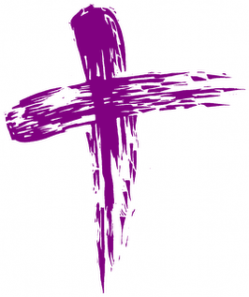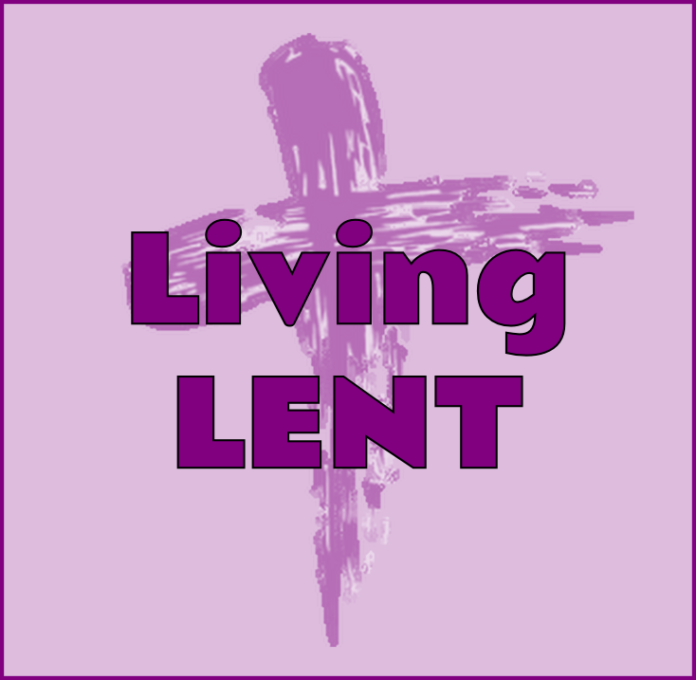The cornerstone of Lent is the call to conversion which commences on Ash Wednesday. Sometimes the impression is given that such conversion is change for change sake or, worse still, for the sake of control by those in authority. The core of conversion in the church is captured by the title of a campaign conducted by British Airways around two decades ago – Change for Better – which collected the spare cash (in different currencies) that passengers had in their pockets at the end of flights and which they would not use again, at least for a while. Christian conversion is not focused on finance (though it does call for almsgiving) but on change in two dimensions, goodness and holiness, morally and spiritually. Lent is not the issuing of a list of do’s and don’ts but an invitation to look at our lives in the light of the Gospel which ‘instead involves looking at the mindset and listening to the heart that guides our lifestyle, to consider and choose what brings us blamelessness and blessedness or bitterness and banishment’.[1] As Pope Francis’ proclaims, ‘the Church must be a place where everyone can feel encouraged to live the good life of the Gospel’.[2]
 Conversion has a communal dimension and demand also, calling for committed participation in the Church, as Louis J. Cameli states that ‘conversion entails a new way of living in the church’.[3] This may be the greatest challenge facing Catholics – participation – particularly in the Western world. In the wake of the Covid pandemic this will involve the recovery of the sacramental dimension of church life. Participation by people – the people of God – is critical if the two other legs of synodality – mission and communion – are to continue standing and serving the work with others for a better world amid witness to the values of the Gospel.
Conversion has a communal dimension and demand also, calling for committed participation in the Church, as Louis J. Cameli states that ‘conversion entails a new way of living in the church’.[3] This may be the greatest challenge facing Catholics – participation – particularly in the Western world. In the wake of the Covid pandemic this will involve the recovery of the sacramental dimension of church life. Participation by people – the people of God – is critical if the two other legs of synodality – mission and communion – are to continue standing and serving the work with others for a better world amid witness to the values of the Gospel.
Like the other evangelists Luke leads the readers of the Gospel(s) to Jerusalem. His account of the journey of Jesus is a type of theological travelogue which takes events along the way like the temptations in the desert and transfiguration on a mountain. These events mark major moments in Jesus’ life, manifesting his humanity in freedom and disclosing his divinity in glory. Entering meditatively and mindfully into these milestones of the Messiah as he makes his way to Jerusalem enables Christians to enter into and experience some of the essential ‘mysteries of the life of Jesus’.[4] Here conversion deepens beyond imitation to become configuration to Christ. This spiritual and sacramental shaping to be more Christlike signifies that the Christian is – in the words of Vatican II – ‘one who has been made a partner in the paschal mystery, and as one who has been configured to the death of Christ, will go forward, strengthened by hope, to the resurrection’.[5] ‘Partner in the Paschal mystery’ points out the personal and communal process of transformation which Living Lent leads to and perfects, looking beyond the cross and forward in joyful hope to Easter.
In the Northern hemisphere Lent is linked with nature, the tilling of ground and sowing of seeds a metaphor for the working of human goodness and divine grace. Indeed Lent – as its title suggests – is also linked to time, the lengthening of daylight (clocks Spring forward). Light is both a symbol and statement of Christian faith with deep scriptural roots. The supreme statement of this is found in the Gospel of John where the evangelist exclaims in the Prologue that the ‘true light’ of God has entered the world and Jesus proclaims ‘I am the light of the world. Whoever follows me will never walk in darkness but will have the light of life’ (8:12). Saint Paul picked up on this in the Letter to the Ephesians telling his readers, ‘For once you were darkness, but now in the Lord you are light. Live as children of light – for the fruit of the light is found in all that is good and right and true’ (5:8-9). This is the classic indicative-imperative formula where God’s grace precedes and empowers the growth of human goodness through the formation of conscience(s). Like light contrasting with and casting out darkness, God’s grace goes against the grain of personal and social sin(s) in furtherance of forgiveness and freedom.
 Living Lent is not about a bit of Spring-cleaning and in modern day jargon decluttering but, as Paul told the Ephesians, ‘you were taught to put away your former way of life…and to clothe yourselves with the new self, created according to the likeness of God in true righteousness and holiness’ (4:22-24). While this will most likely not be achieved in a single season of Lent, it shows the horizon for the journey of a lifetime that looks towards and leads to holiness. As Pope Francis states at the beginning of Rejoice and Be Glad : ‘The Lord asks everything of us, and in return he offers us true life, the happiness for which we were created. He wants us to be saints and not to settle for a bland and mediocre existence’.[6] There is nothing bland or mediocre in response to the Lenten call to change as its exercise of sharing (almsgiving) and sacrificing (fasting) show.
Living Lent is not about a bit of Spring-cleaning and in modern day jargon decluttering but, as Paul told the Ephesians, ‘you were taught to put away your former way of life…and to clothe yourselves with the new self, created according to the likeness of God in true righteousness and holiness’ (4:22-24). While this will most likely not be achieved in a single season of Lent, it shows the horizon for the journey of a lifetime that looks towards and leads to holiness. As Pope Francis states at the beginning of Rejoice and Be Glad : ‘The Lord asks everything of us, and in return he offers us true life, the happiness for which we were created. He wants us to be saints and not to settle for a bland and mediocre existence’.[6] There is nothing bland or mediocre in response to the Lenten call to change as its exercise of sharing (almsgiving) and sacrificing (fasting) show.
(Fr Kevin O’Gorman SMA)
[1] Kevin O’Gorman SMA, Journeying in Joy and Gladness – Lent and Holy Week with Gaudete et Exsultate, (Dublin: Messenger Publications, 2019), 6.
[2] Pope Francis, Rejoice and Be Glad, (2013), Par. 114.
[3] ‘Clericalism isn’t the only thing stopping the Catholic Church from embracing synodality’, America, January 12th 2024.
[4] Phrase taken from Joseph Ratzinger/Pope Benedict XVI, Jesus of Nazareth – Holy Week, (San Francisco: Ignatius Press, 2011), xvi.
[5] Pastoral Constitution on the Church in the Modern World, in Vatican Council II – the Basic Sixteen Documents, (Dublin: Dominican Publications, 2007), par. 22.
[6] Rejoice and Be Glad, par. 1.


You must be logged in to post a comment.